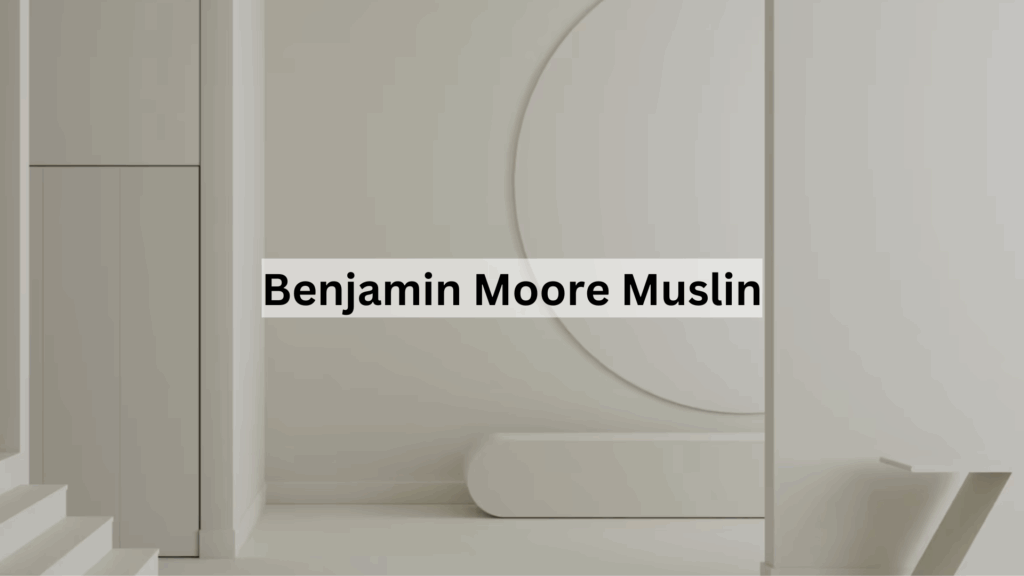I’ve had Benjamin Moore’s Muslin on my walls for over eight months now, and I’m ready to share everything I’ve learned about this warm, inviting color. This soft, neutral tone has changed my home in unexpected ways.
In this blog, you’ll learn:
- What Muslin actually looks like in real homes
- Which rooms work best with this color
- Colors that pair perfectly with it
- How to test it properly before buying
I’ve used this paint in different rooms with various light exposures and watched how it changes from morning to evening. I’ve made the mistakes so you don’t have to.
Let’s see if this warm, versatile neutral is right for your home.
What Kind of Color Is Muslin?
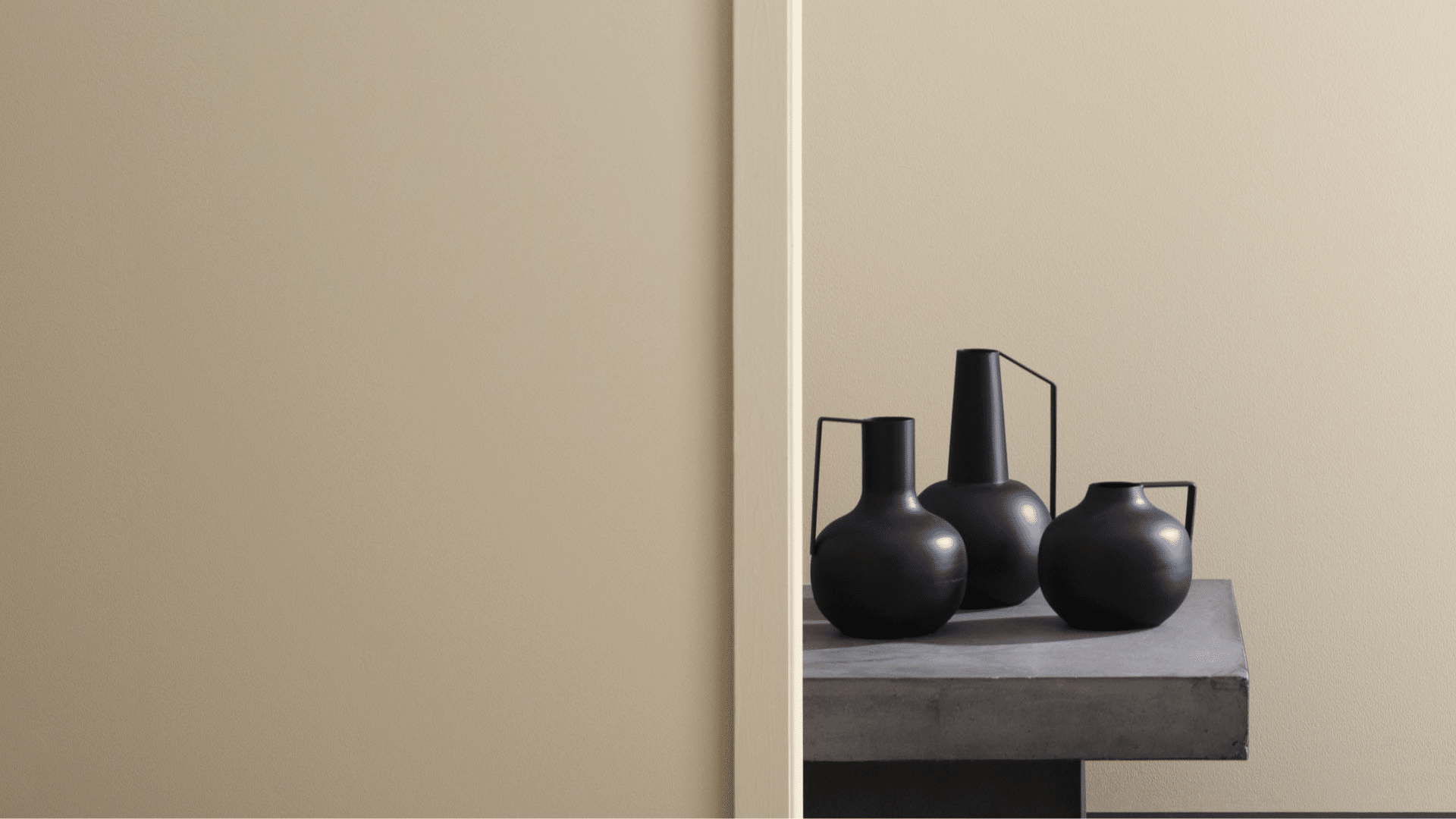
Muslin (BM 1034) is a soft, light beige with subtle, warm undertones. It’s a quiet color that adds a cozy, welcoming feeling to any room. I see it as the color of fresh linen or warm sand—gentle, bright, and full of warmth.
I’ve noticed it shifts throughout the day. In morning light, it shows more of its warm character. By afternoon, the beige undertones become slightly more noticeable, and in evening light, it takes on a deeper, more golden quality.
The color has an LRV (Light Reflectance Value) of 66.54, placing it in the light range. This means it reflects a good amount of light, creating spaces that feel open and airy. The soft nature of Muslin makes it great for creating rooms that feel warm and inviting.
What makes Muslin stand out is its mood-enhancing ability. In most spaces, it creates a sense of comfort and ease with a warm quality that few other colors can match. This emotional effect helps it work well across many settings and home styles.
What Rooms Work Best with Muslin?
I’ve found that Muslin works wonderfully in spaces where you want a soft, inviting look with lasting appeal. Based on my experience, here are the spaces where Muslin performs best:
Living Rooms

This color makes living areas feel warm and welcoming. It creates a gentle background that allows darker furniture and art to stand out nicely. In my living room, Muslin walls make the space feel complete while highlighting my walnut coffee table and blue accent pieces.
The color works especially well in spaces that need some warmth without being loud. It adds enough substance to fill a room with personality. When paired with good lighting, it creates a space that feels both cozy and open.
Bedrooms
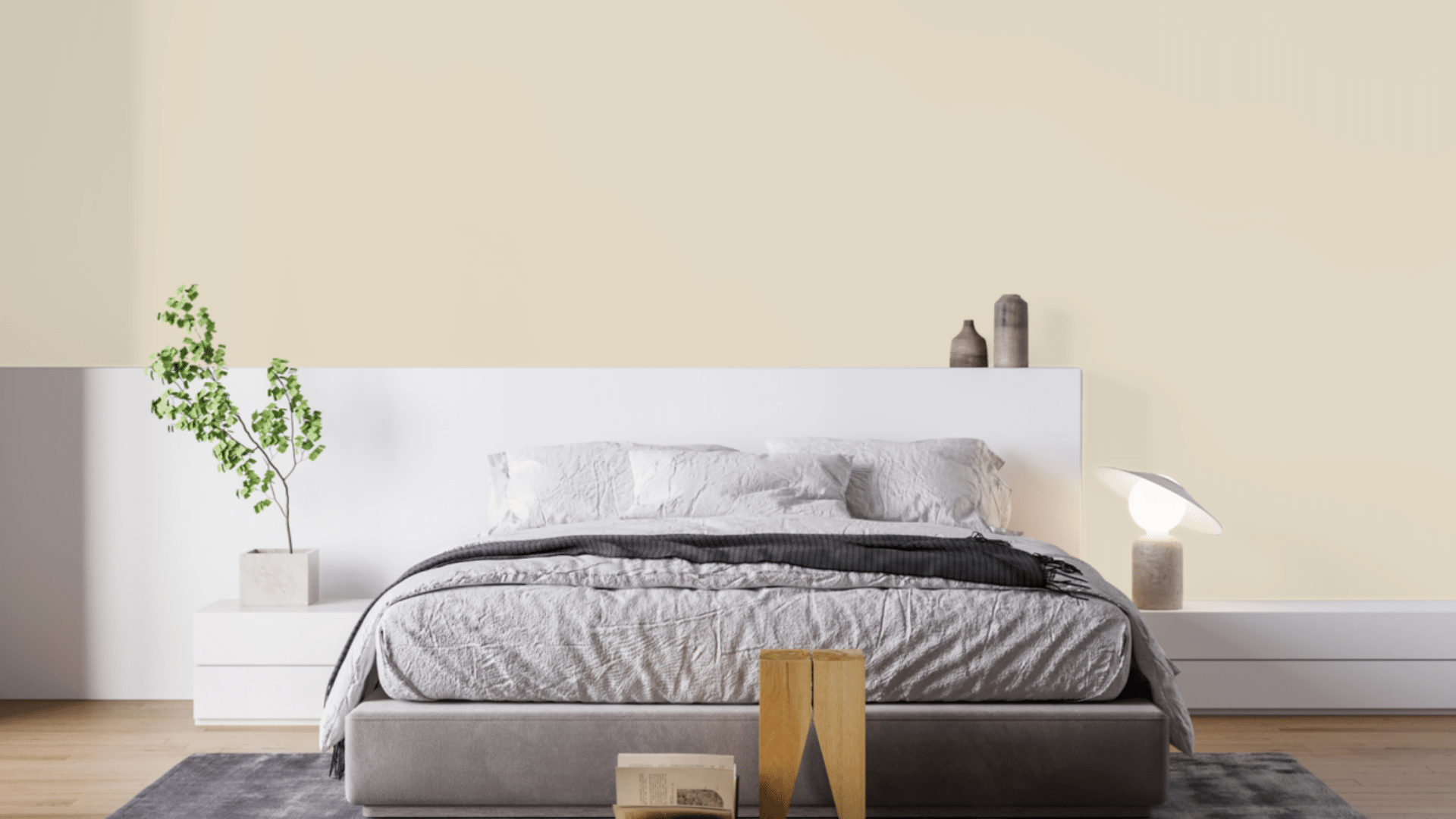
Muslin can transform bedrooms into peaceful retreats. I used it in my guest bedroom, where it creates a restful yet warm atmosphere. The beige tones promote relaxation while still feeling more interesting than typical bedroom colors.
What surprised me is how well it works with different bedding colors. My white linens look crisp against the beige walls, while the brown throw pillows bring depth to complement the warmth of the beige. The room feels like a high-end hotel – special and well-designed.
Home Offices
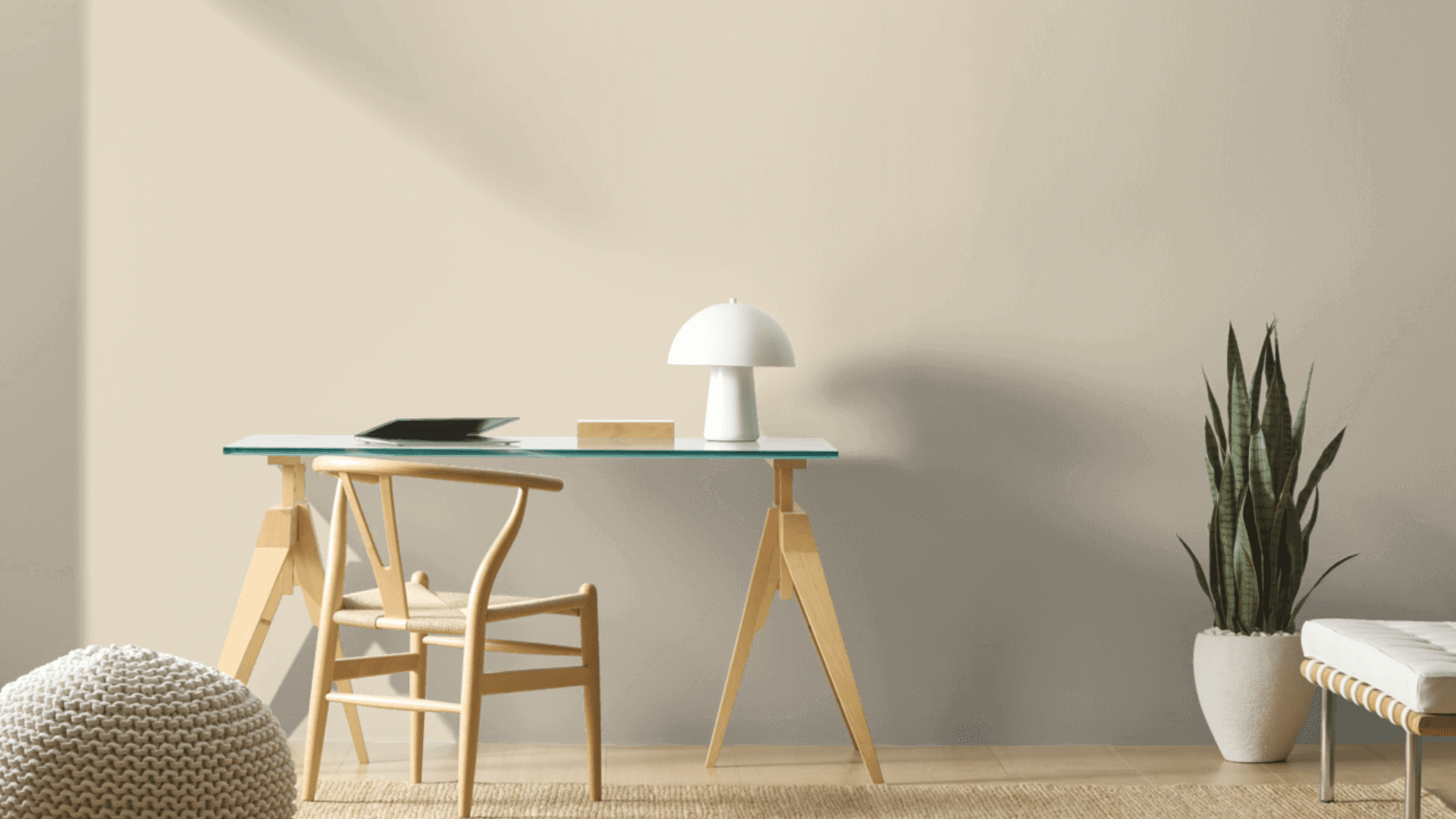
Muslin helps create calm and focus in workspaces. The soft beige feels professional yet comfortable during work hours. I painted my home office walls in this shade and find it creates the perfect background for video calls while keeping me relaxed and attentive.
Muslin is particularly useful in offices that need to feel creative and organized. The color seems to add balance while promoting clear thinking. I’ve noticed I feel more productive in my Muslin office compared to my previous stark white workspace.
Dining Rooms
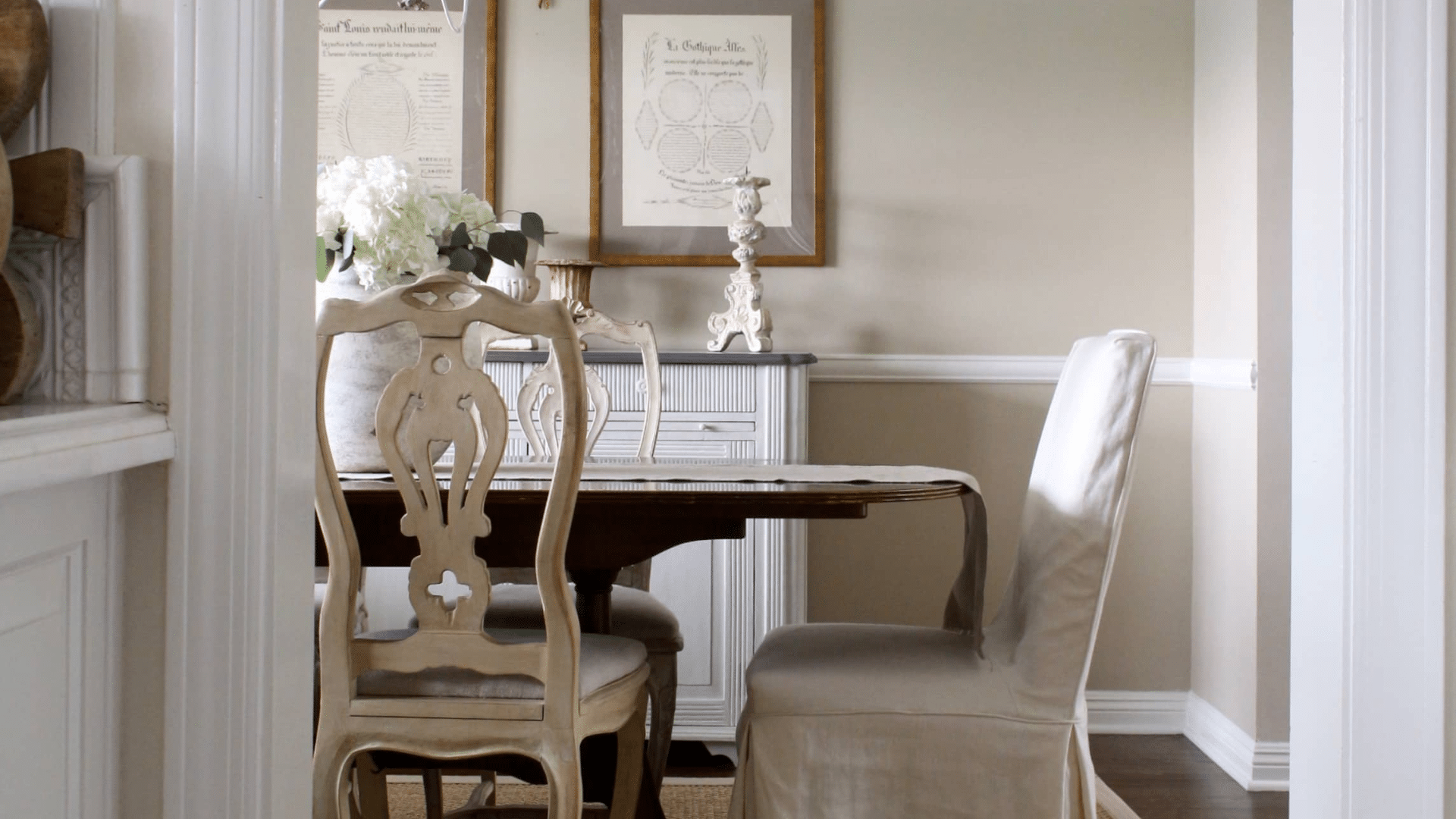
This gentle beige can add a touch of sophistication to dining spaces. I helped my sister paint her dining room Muslin, and it feels elegant for dinner parties and comfortable for family meals. It works well for creating a space that feels formal yet not stuffy.
The color pairs beautifully with wood furniture and metal accents. It adds just the right amount of color without competing with food or table settings. It’s a smart choice for a room that needs to be versatile for different occasions.
Kitchens
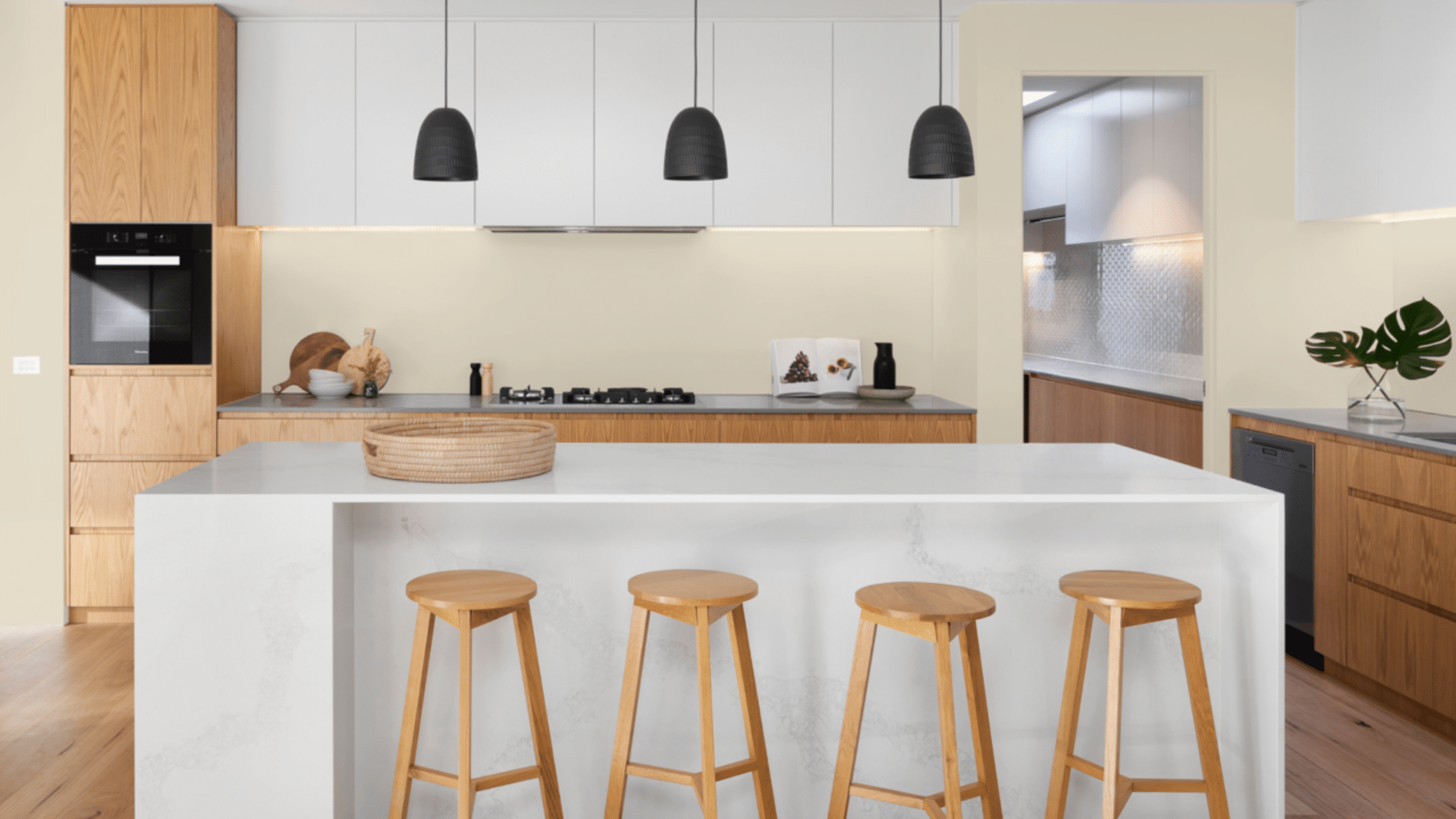
Muslin can add subtle warmth to kitchens, either on walls or cabinets. I painted my kitchen walls this shade, and it transformed the space from plain to purposeful. The beige acts as a soft backdrop that makes white cabinets look clean while adding warmth.
The color works well with many kitchen materials – white marble, dark wood, and stainless steel all look great against it. If you’re not ready to commit to beige cabinets, even the walls in this shade can make a big impact on how the space feels.
What Colors Go Well with Muslin?
- Crisp whites: Create a fresh, clean contrast that feels bright
- Chocolate brown: Offers a rich contrast that feels warm and cozy
- Navy blue accents: These add depth that works surprisingly well
- Natural wood tones: Add organic texture and warmth
- Bronze and copper accents: Add a touch of warmth that makes the color shine
For my bedroom, I combined Muslin walls with white trim and bronze lighting fixtures. The combination feels soothing yet interesting.
What Style Works Well with This Color?
Muslin adapt to many design styles. In modern homes, it brings a warmth that feels current. For farmhouse spaces, it creates the perfect background that complements rustic decor. In traditional settings, it offers a timeless touch that feels right at home.
Most impressively, Muslin works well in homes that mix different styles by adding a gentle presence to spaces that combine various elements.
My own home mixes modern items with more traditional ones, and this color creates the perfect background for both. This flexibility makes it a smart choice if you like to change your decor or mix elements from different styles.
Is It a Warm or Cool Color?

Muslin is a warm color with balanced undertones. The beige base gives it that warm, cozy feeling, while the subtle yellow undertones add complexity. I’d describe it as “softly warm” – the kind that makes a room feel inviting rather than hot.
The neutral aspects keep it from feeling too yellow or orange. This balance makes it work well year-round in most homes. When used correctly, it doesn’t feel too warm despite its warmth.
The softness balances the warmth, making it more livable for everyday spaces. In rooms with lots of natural light, the balance helps it show its true beige character throughout the day.
If you’re worried about a space feeling too warm, I’ve found that adding cool elements like blue textiles, glass accents, or silver fixtures creates the perfect balance. In my dining room, the Muslin walls look beautiful with my silver candlesticks and blue table linens.
Color Characteristics Table
| Characteristic | Muslin | What This Means For Your Space |
|---|---|---|
| Temperature | Warm | Creates a cozy, inviting atmosphere |
| Undertones | Beige with subtle yellow notes | Adds depth and warmth |
| Light Reflectance Value | 66.54 | Light tone that significantly brightens spaces while adding color |
| Seasonal Feel | Year-round | Works well in both winter and summer settings |
| North vs. South Rooms | Adaptable | Appears warmer in north-facing rooms, softer in south-facing rooms |
How to Test This Color in Your Space?
- Buy a sample: Get a small container of Muslin
- Paint a board: Use a 2×2 foot piece of white poster board
- Move it around: See how it looks in different locations at different times of day
- Live with it for 3 days: Your first impression might change
When I tested Muslin, I was surprised by how much it changed from morning to evening. In my north-facing bedroom, it appeared more warm and golden. In my west-facing living room, it showed more of its beige character throughout the day.
What Paint Finish Should You Choose?
- Flat: Good for ceilings with minimal texture
- Matte: My top choice for most walls – the soft color looks rich without glare
- Eggshell: This works in kitchens and bathrooms where you need to clean walls
- Satin: Adds a slight sheen, could make the color look slightly brighter than expected
- Semi-gloss: Too shiny for Muslin walls, but works for trim and doors
I used matte in my bedroom and eggshell in my kitchen. The eggshell finish makes cleaning easier without adding too much shine that would change how the color looks.
Real Home Ideas Using Muslin
- Full room: The Muslin on all walls creates a soft, cohesive feeling
- Accent wall: Used on one wall with white walls for a subtle focal point
- Cabinets: Kitchen or bathroom cabinets in this shade create a custom look
- Furniture: A bookcase or dresser painted this shade adds a warm touch
- Exterior: Works beautifully as a trim color with darker siding
My friend painted all her bathroom walls Muslin with a dark vanity, creating a spa-like look that feels both warm and calm. It looks amazing and has inspired me to think about using it in more areas of my home.
Mistakes to Avoid
- Using it in rooms with very cool lighting – This can cause Muslin to lose its warm beige tones. Stick with balanced white bulbs (2700-3000K) to showcase its true beauty.
- Not testing in your actual space – This color can look very different in various lighting conditions. I was surprised how it appeared in my north-facing bedroom versus my west-facing living room. Always test a large sample in your own space.
- Using too many cool accessories – This can make the room feel disconnected. Mix in some warm woods, creams, or bronze accents for balance.
- Expecting it to look exactly like online photos – Every screen shows colors differently, and professional images are often edited. The only way to know how it will look in your home is to test it yourself.
- Pairing with the wrong whites – Some cool whites can make Muslin look too yellow. Test white trim colors alongside your Muslin sample to find the best match.
Why People Like Muslin?
Muslin has become popular among many homeowners, and I understand why. Its soft quality creates spaces with personality while still feeling very livable. People like it because it’s not a basic neutral—it has character without being hard to use.
The color creates warm spaces that still feel open. It works with many decorating styles and doesn’t date quickly like more specific colors might. Whether in natural or artificial light, it shifts throughout the day, keeping spaces interesting and dynamic.
Is Muslin Right For Your Home?
Muslin creates spaces that feel both warm and balanced at the same time. After using this color in multiple rooms over several months, I’m still happy with my choice.
What makes it stand out is how it adds gentle character while remaining very flexible with different furniture and decor styles.
It’s not a color for those who want strong, bold walls. Instead, it creates a foundation that supports your furniture and accessories while making a subtle statement of its own. This balanced presence explains why it remains a favorite choice season after season.
In a world of stark whites and gray neutrals, Muslin offers the perfect option for those wanting to add color with purpose. It works with modern, farmhouse, traditional, and many styles in between.
Is it versatile? Yes. It creates beautiful, livable spaces that feel warm and personal—and that’s what truly matters.
Frequently Asked Questions
Does Muslin Work with White Trim?
Yes, it pairs beautifully with white. The soft beige creates a pleasing contrast with the pure white trim that feels fresh and intentional.
Is Muslin Too Light for Large Rooms?
Not at all. When used with purpose, it can work in large rooms. The light reflective value (66.54) means it’s quite bright but still has enough substance to hold its own in bigger spaces while keeping them feeling open and airy.
How Does It Compare to Other Beige Paints?
Muslin is softer and more balanced than many beiges, with subtle, warm undertones that add sophistication. It changes more throughout the day than many similar colors, showing different aspects of its personality as the light changes.
Will This Color Show Dirt Easily?
It shows less dirt than very dark colors or pure whites would. The light-to-medium tone helps mask minor smudges reasonably well, though, like any paint, high-traffic areas may need occasional touch-ups.
Can I Use Muslin in An Open Floor Plan?
Yes, and it works quite well. Its subtle nature means it flows nicely from room to room while creating a cohesive look throughout the space. It pairs well with other light neutrals if you want to create some variety within connected rooms.

